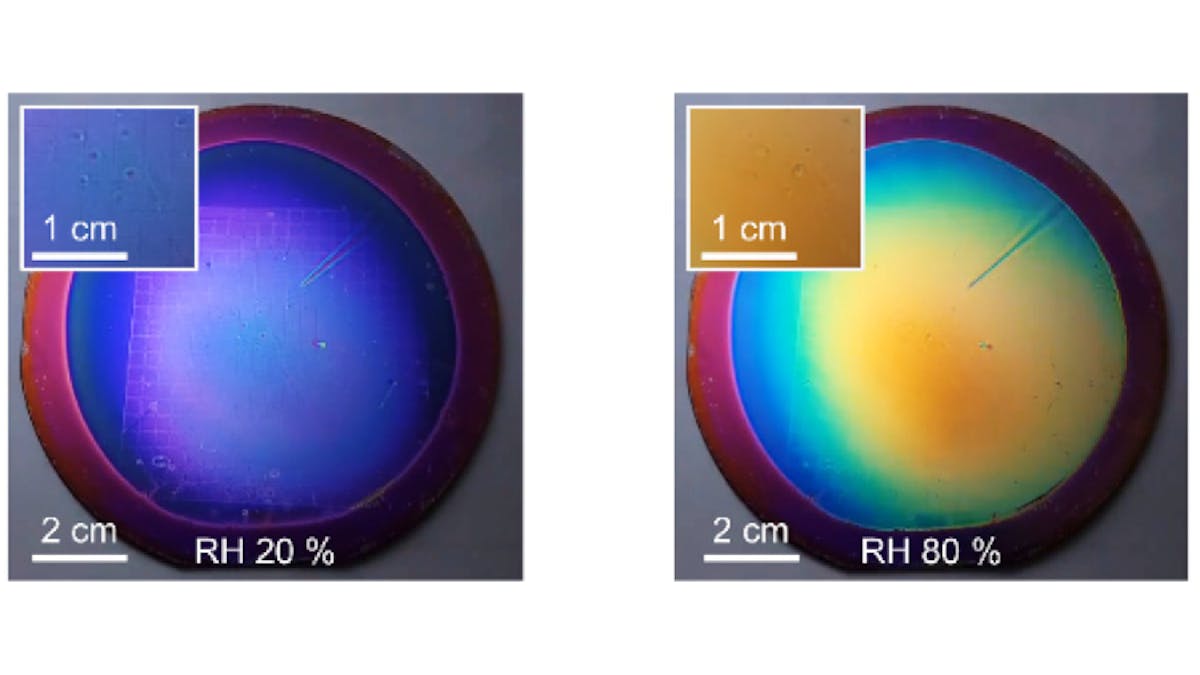This High-Speed Colorimetric Sensor Delivers Rapid Humidity Readings with a Zero Power Draw
The same technology could be used for health monitoring wearables, smart displays, and even home decor, its designers claim.

Researchers from Pusan National University, the Gwangju Institute of Science and Technology (GIST), and the Korea Advanced Institute of Science and Technology (KAIST) have developed a high-speed wide-gamut colorimetric sensor that, they say, could be used for real-time environmental monitoring at a zero power draw.
"Our design introduces nanohole arrays that utilize Fano resonance and plasmonic resonances, significantly enhancing color gamut by controlling the reflectance spectrum from subtractive coloration to additive coloration," explains co-corresponding author Gil Ju Lee, associate professor at Pusan Natiional University. "Furthermore, these nanohole channels also enhance responsiveness."

A colorimetric sensor is designed to alter a displayed color according to its detection — and is primarily designed to be read by the human eye, though can also be integrated into electronics using a color sensor. Unlike electronic sensors, they need no power to operate or read. Existing designs, however, can suffer from slow response rates and a narrow color gamut — both issues the team set out to solve.
Rather than using a chemical reaction, as with most colorimetric sensors, the team's design is a two-dimensional nanostructured Fano resonant colorimetric sensor (nFRCS). A layer of chitosan is sandwiched between layers of silver, thin on the top and thick on the bottom, then coated with porous germanium. A nanohole array — which is exactly what it sounds like — allows water vapor to reach the chitosan, which swells and shrinks in response to the ambient humidity.
In testing the team found that the resulting sensor could span 141 percent of the standard RGB (sRGB) color gamut and 105 percent of the Adobe RGB gamut, wider than rival designs, while responding in just 287 milliseconds and recovering in 87 milliseconds at its quickest — fast enough for real-time observation.
"Beyond humidity sensing, the nFRCS can also serve as health monitoring devices, intelligent displays, and interior materials, reacting to external stimuli by generating distinct color shifts," Lee claims. "This design could serve as a framework for other types of colorimetric sensors that detect different environmental changes other than humidity."
The team's work has been published in the journal Optica under open-access terms.
Freelance journalist, technical author, hacker, tinkerer, erstwhile sysadmin. For hire: freelance@halfacree.co.uk.

